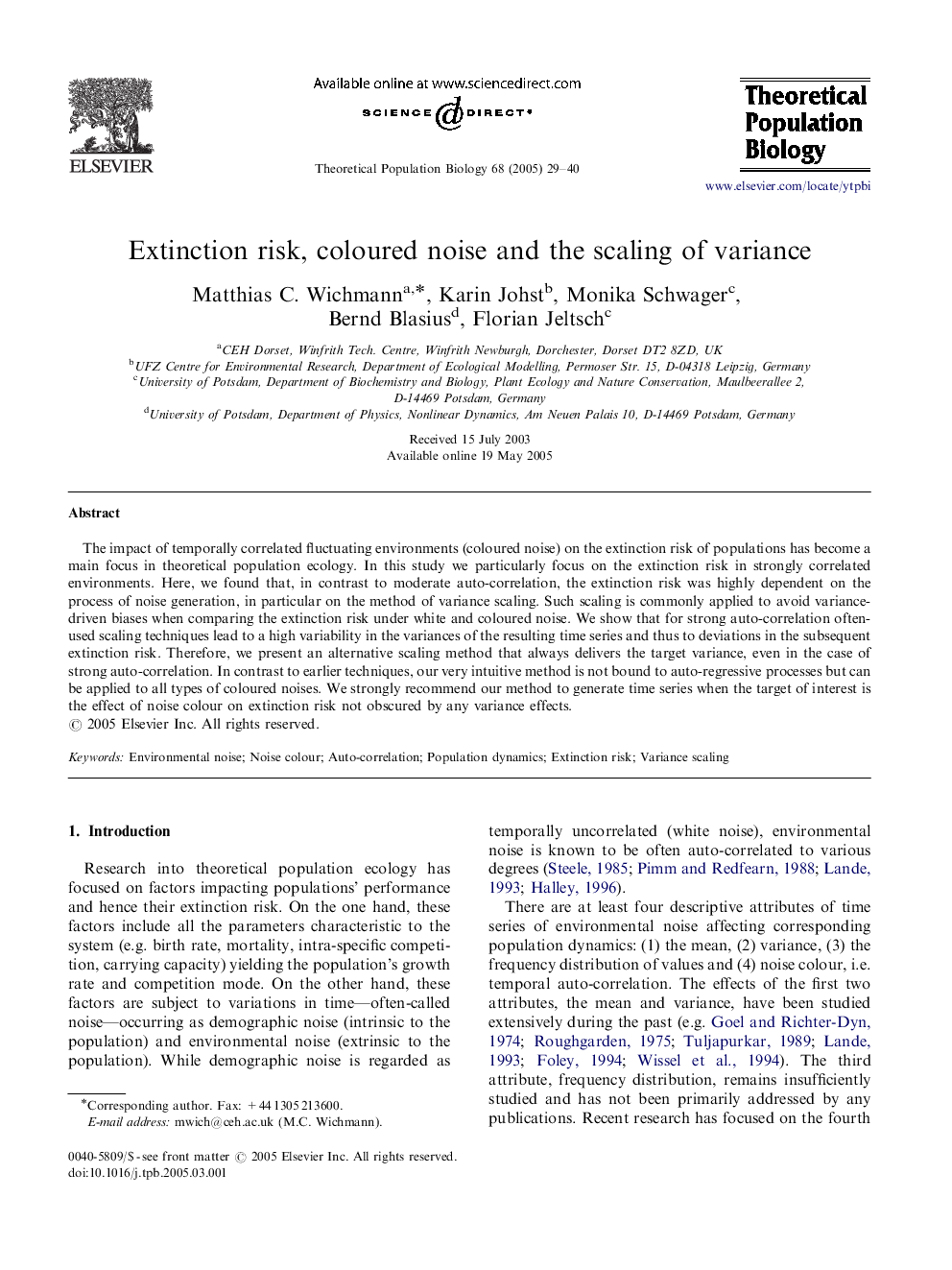| Article ID | Journal | Published Year | Pages | File Type |
|---|---|---|---|---|
| 9471437 | Theoretical Population Biology | 2005 | 12 Pages |
Abstract
The impact of temporally correlated fluctuating environments (coloured noise) on the extinction risk of populations has become a main focus in theoretical population ecology. In this study we particularly focus on the extinction risk in strongly correlated environments. Here, we found that, in contrast to moderate auto-correlation, the extinction risk was highly dependent on the process of noise generation, in particular on the method of variance scaling. Such scaling is commonly applied to avoid variance-driven biases when comparing the extinction risk under white and coloured noise. We show that for strong auto-correlation often-used scaling techniques lead to a high variability in the variances of the resulting time series and thus to deviations in the subsequent extinction risk. Therefore, we present an alternative scaling method that always delivers the target variance, even in the case of strong auto-correlation. In contrast to earlier techniques, our very intuitive method is not bound to auto-regressive processes but can be applied to all types of coloured noises. We strongly recommend our method to generate time series when the target of interest is the effect of noise colour on extinction risk not obscured by any variance effects.
Related Topics
Life Sciences
Agricultural and Biological Sciences
Agricultural and Biological Sciences (General)
Authors
Matthias C. Wichmann, Karin Johst, Monika Schwager, Bernd Blasius, Florian Jeltsch,
